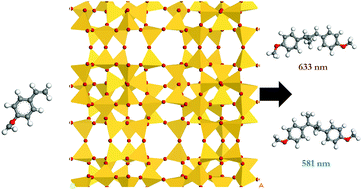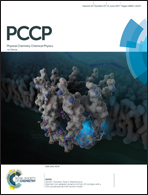Elucidating the structure of light absorbing styrene carbocation species formed within zeolites†
Abstract
Styrene derivatives can form carbocation species upon contact with zeolites. In this study, structures of a series of styrene derivatives with substituents in the para position, which have been obtained experimentally, were elucidated using theoretical calculations. Styrene with F, Cl, Br, methyl (Me) and methoxy (MeO) groups was studied by means of (TD)-DFT calculations. Electronic structure changes depending on the substituents, Br and MeO, showed smaller HOMO–LUMO gaps in the series. Theoretical excitation energies of two dimeric species were found to match very well with absorption bands reported experimentally. Ternary and secondary carbocation dimeric species were found to be responsible for the absorption of light in the visible region. Both structures were studied using aromaticity indexes as well as atoms-in-molecules theory to understand the changes in electron delocalization to produce non-typical light absorbing compounds. Aromatic rings with all the substituents lose aromaticity to reinforce charge transfer within the molecule, stabilizing the adjacent carbocation species. The results are attractive to interpret the electronic spectra of such compounds formed within zeolites and for a better understanding of the electronic structure as well as the reaction mechanisms of the carbocation species.



 Please wait while we load your content...
Please wait while we load your content...